
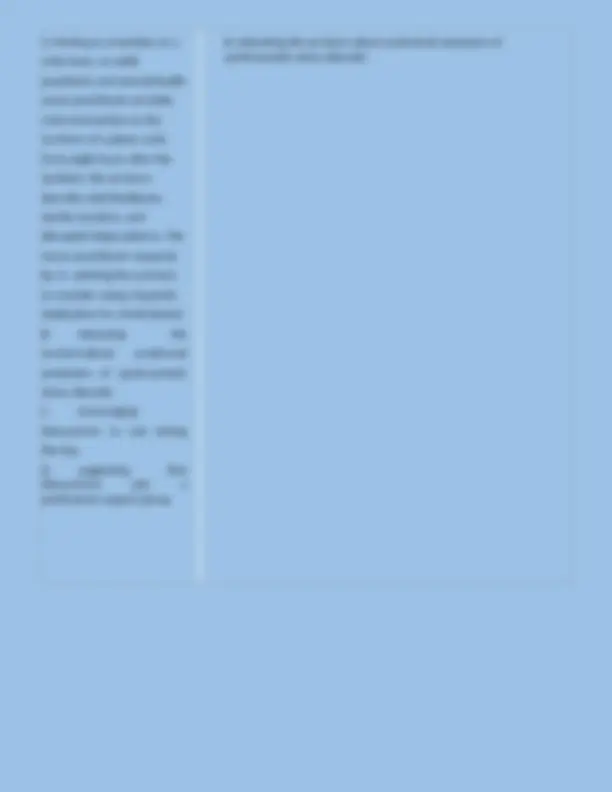
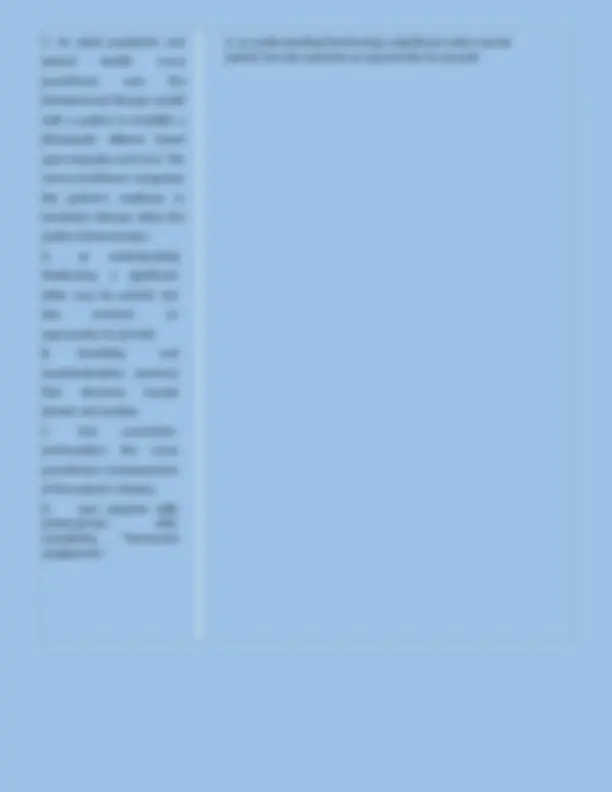
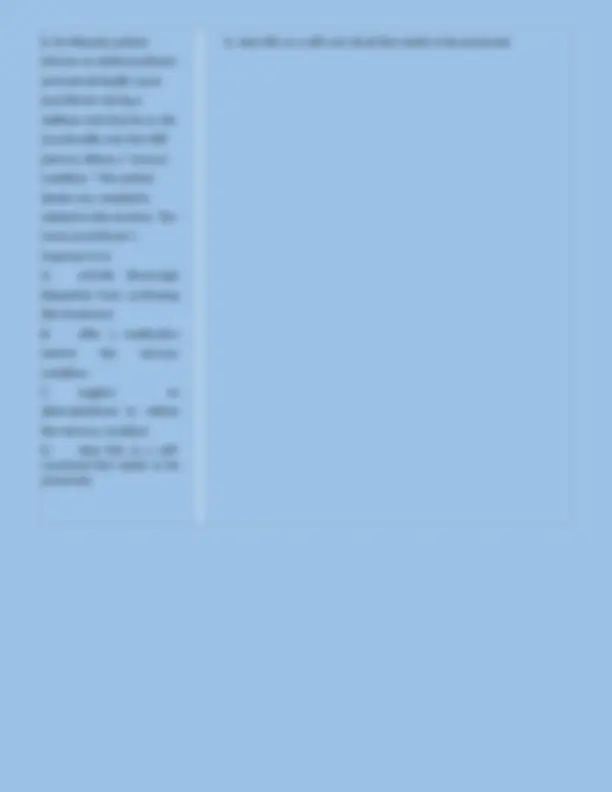
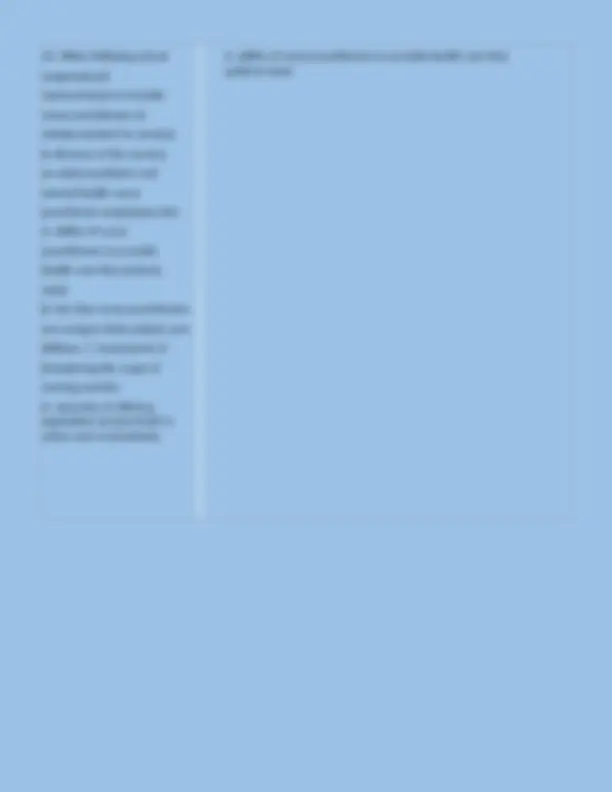
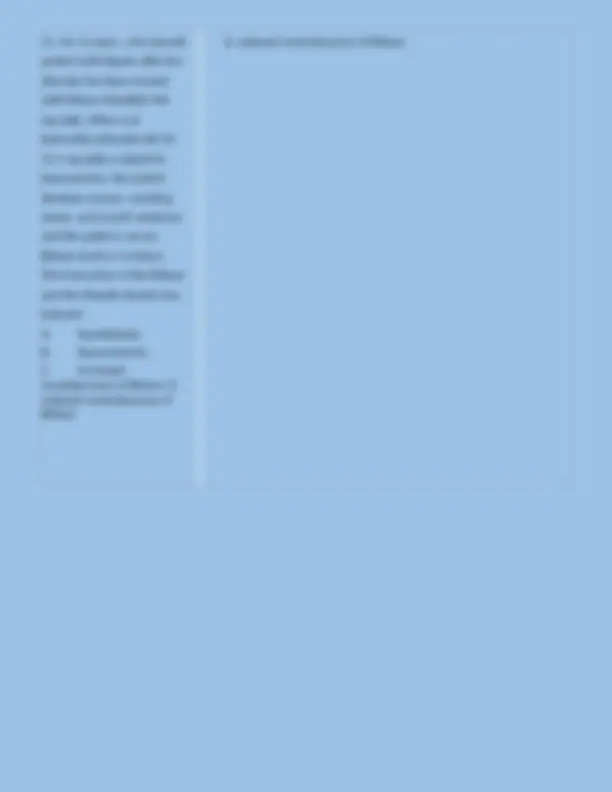
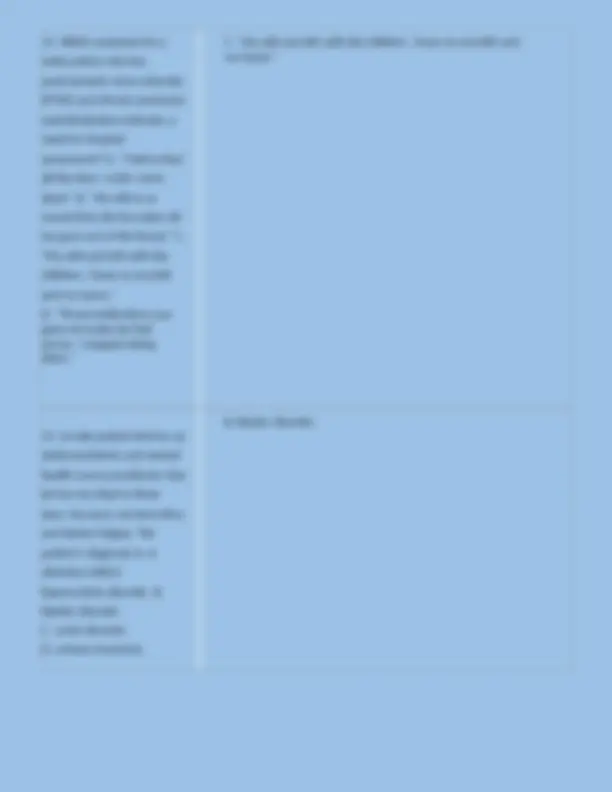
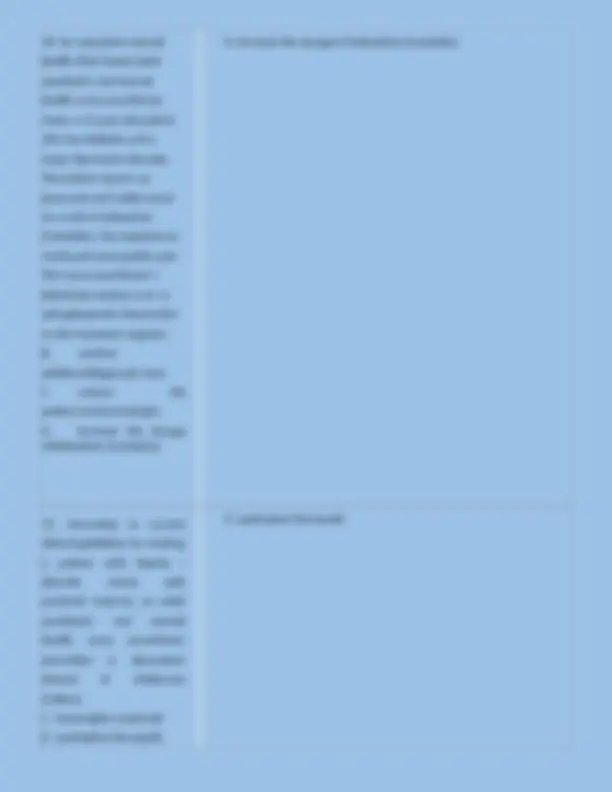
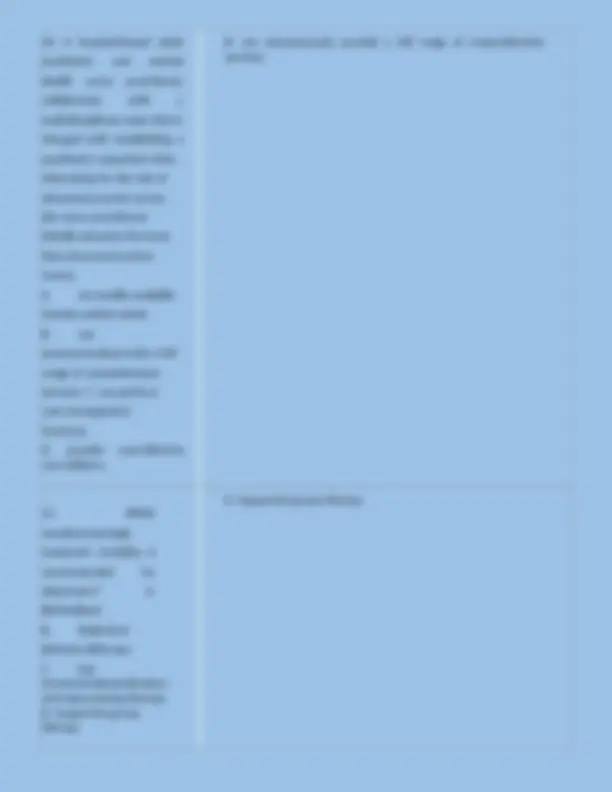
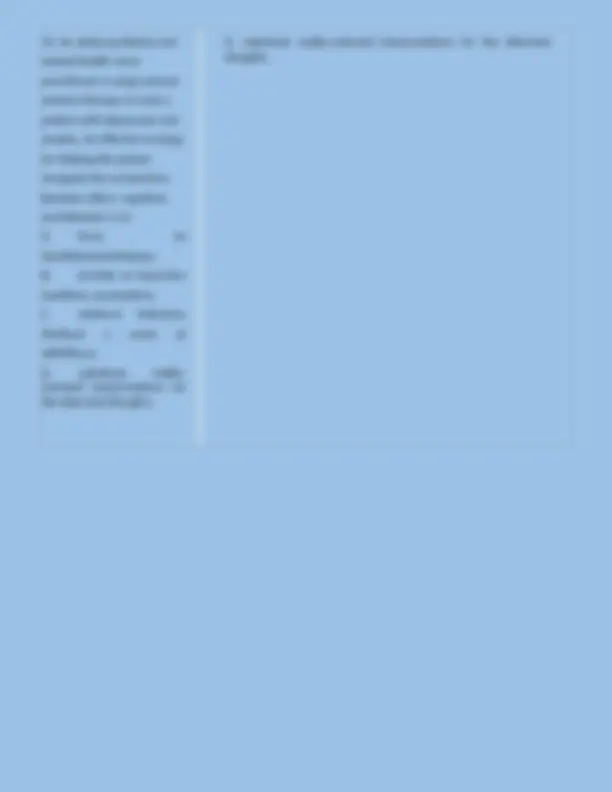
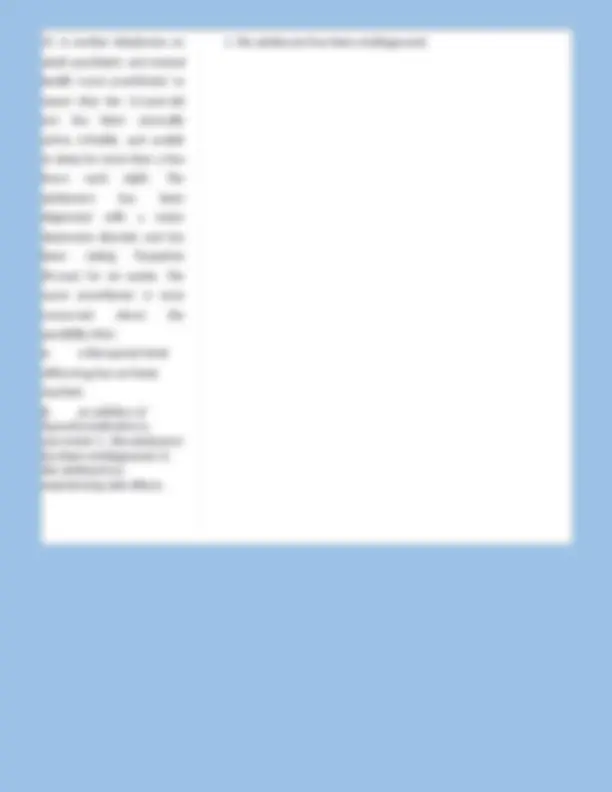


Study with the several resources on Docsity

Earn points by helping other students or get them with a premium plan


Prepare for your exams
Study with the several resources on Docsity

Earn points to download
Earn points by helping other students or get them with a premium plan
Community
Ask the community for help and clear up your study doubts
Discover the best universities in your country according to Docsity users
Free resources
Download our free guides on studying techniques, anxiety management strategies, and thesis advice from Docsity tutors
A series of multiple-choice questions related to the ancc pmhnp exam. It covers various topics in psychiatric and mental health nursing, including personality disorders, medication management, therapeutic approaches, and neurochemical pathophysiology. The questions are designed to assess knowledge and understanding of key concepts in the field.
Typology: Exams
1 / 18

This page cannot be seen from the preview
Don't miss anything!











A patient with borderline personality disorder experiences intense anxiety when an adult psychiatric and mental health nurse practitioner goes on vacation. The best explanation for this reaction is that the patient: A. has failed to develop clear ego boundaries. B. has failed to master object constancy. C. is employing primitive idealization. D. is employing projective identification. B. has failed to master object constancy
days later, the patient reports feeling less depressed and having fewer suicidal thoughts, but begins to threaten suicide "if things do not work out." Nursing staff members report feeling resentful and manipulated, but fear for the patient's safety. The adult psychiatric and mental health nurse practitioner's intervention is to: A. assist the staff indeveloping a treatment plan that limits contact with the patient to one person per shift. B. develop a "no suicide"pact with the patient to decrease his helplessness and increase his feelings of control. C. encourage the patientto express his fears of improving and being abandoned or of leaving the safe environment. D. increase supervisionand restrict milieu participation to decrease the secondary gain from manipulation.